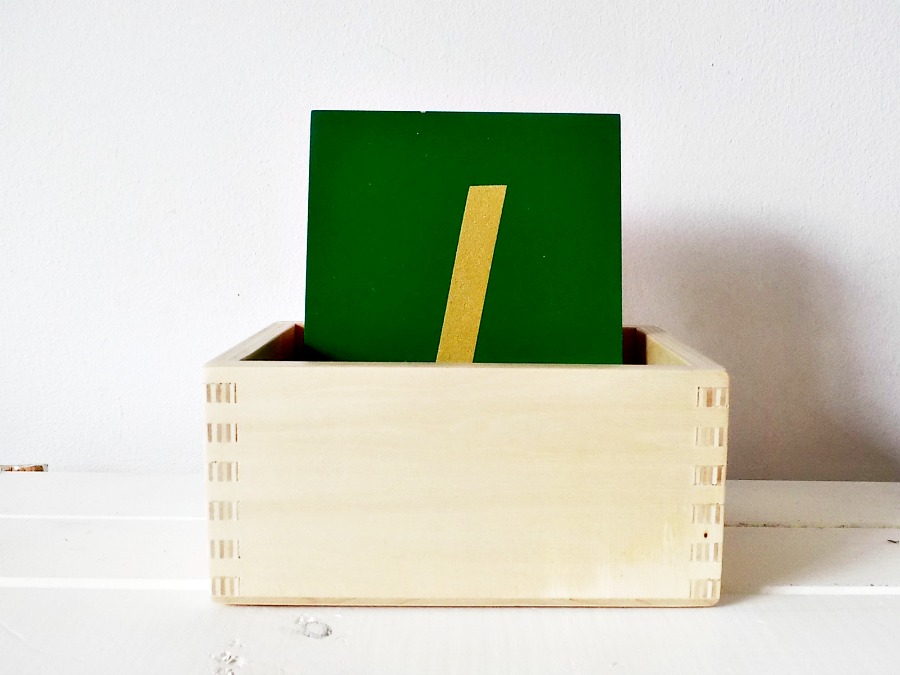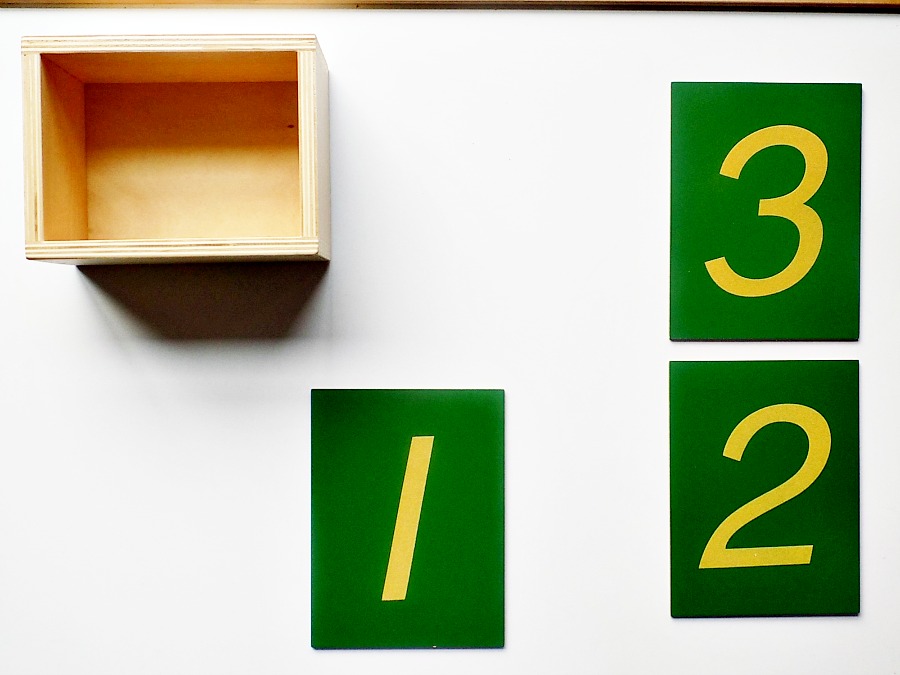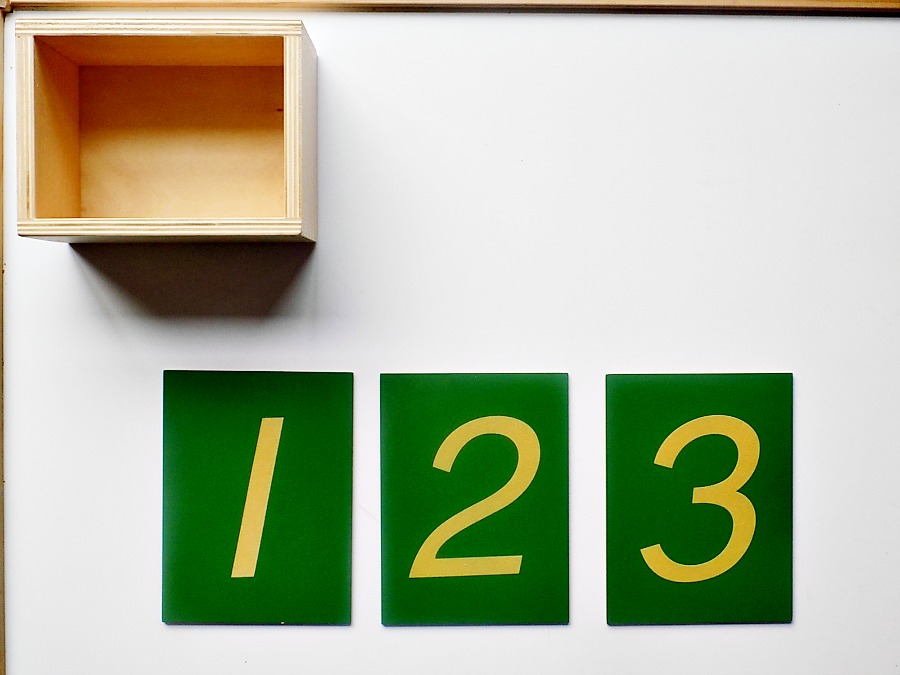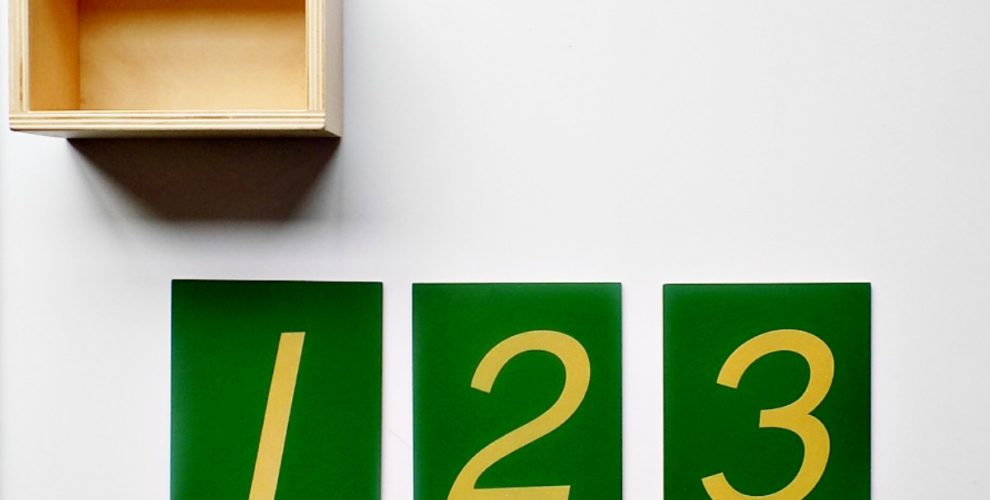The sandpaper numerals are taught by the way of a Three Period Lesson. Montessori teachers use the term three period lesson so often it becomes second nature. We forget that there are others who may not understand what a three period lesson is. So now, before we get any further into introducing sand paper numerals, it is a perfect time to review the concept of a three-period lesson.

The three-period lesson is a fundamental approach to introducing a new concept (not just vocabulary) to children. It is used to move the child from basic understanding to mastery.
The Three-Period Lesson:
This time, I will use the sandpaper numerals – numbers 1, 2 and 3. With the sandpaper numerals, it is imperative that the child traces the numbers in all three stages as s/he is building a kinaesthetic memory of the number shape.
Period 1: Introduction (This is…)
During the first period, it is important to always isolate the desired object. Pick up the sandpaper – number 1. Say (while tracing) to the child “This is one..one.” Set it down and move it out of the way. Pick up the sandpaper – number 2 and say to the child “This is two…two”. Repeat same process with the sandpaper – number 3. It is always good to repeat the words several times while pointing to the appropriate item or card. Letting the child handle the Montessori materials is also a good idea. There is no need to rush; there is beauty in the calm serenity of the lesson.

Period 2: Association/Recognition (Show me…)
The second period is often a separate lesson, done after the first period lesson. Its purpose is to extend the handling and action presented in the first lesson. It is not a time to ask the child to verbalize the names of the Montessori materials. Unfortunately, most adults want to rush through this period and prematurely ask students to verbally identify materials without enough practice. This is the most critical period and should last the longest.During the second period the Montessori teacher has the opportunity to review and reinforce vocabulary as well as see what connections the child made.
In this lesson, the Montessori teacher calls upon the students to show the appropriate materials. Place sandpaper numerals (1, 2 and 3) on the table. Ask child to trace, or feel the numbers: ”Please trace two. Show me number two.” Repeat the process several times in different contexts. If the child is unable to correctly identify the correct item, return to the period one lesson, stating the word and pointing to the correct item.

Period 3: Recall (What is this…?)
This is the first time the Montessori teacher asks the child to name the object or idea. The teacher should only move to the third period when she is sure that the child will succeed. This may come some time after the second period lesson as mastery often takes time. Since the ultimate goal is to help the child master the information for himself, moving to the third period too soon, puts the teacher into the mode of correcting the child.
In the third period the child is asked: ”Can you trace this number and tell me what it is?”
It is important to understand that the knowledge gained during these lessons becomes the starting point for the child’s next quest for knowledge. Every time a child masters a skill or idea, he or she becomes stronger, more competent and more independent and wants to learn more.




19 Comments
Kari
This is a great idea! Thank you 🙂
Leky83
Thank you Kari!
Hayley
this is so interesting! I have not heard of this before
Leky83
Thanks Hayley!
Adree
Thanks for explaining the 3 steps. That’s a great way to teach kids in a fun way.
Leky83
Thanks Adree!
Meg
I love that you explained the 3 period lesson. It reminds me a lot of what I learned in education classes about teaching kids though an “I do” “we do” “you do” model, gradually releasing responsibility of the learning to the student and empowering them to learn and master the content.
Leky83
Thank you so much Meg!
Liz
I love this idea!
Leky83
Thanks Liz!
Nita
Very educating! thanks for sharing
Leky83
Thank you Nita!
Vicki @ Babies to Bookworms
This is such an awesome activity! I bet my daughter would have a lot of fun with it!
Leky83
Thanks Vicki!
Eryn
How have I not heard of this way of teaching before! Thanks!
Leky83
Thank you Eryn!
Eryn
How have I not heard of this way of teaching before! Thanks!
Sara @ The Sanity Plan
Thanks so much for sharing this! I love this technique… it makes so much sense and you broke it down wonderfully!
Leky83
Thank you Sara!